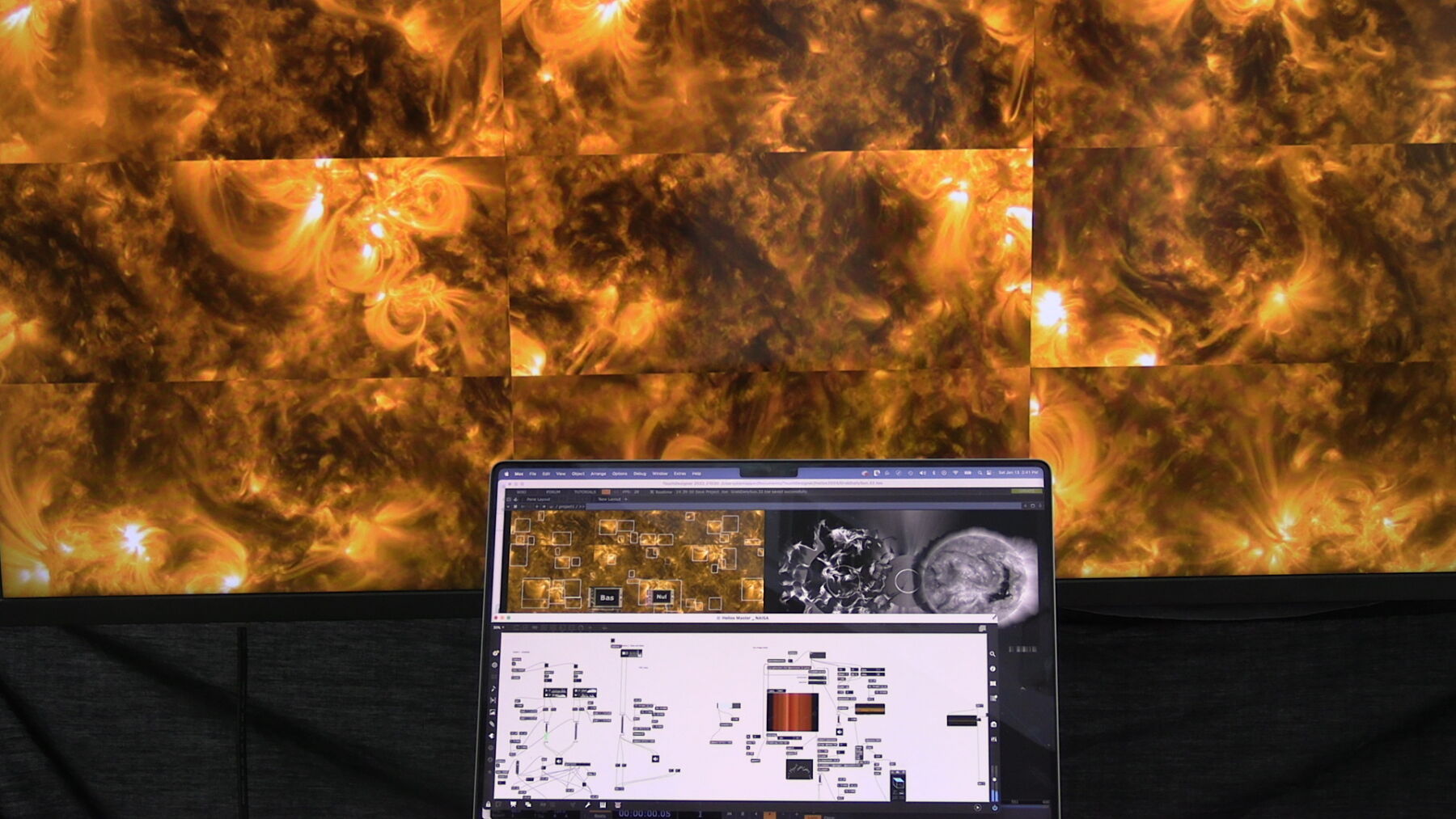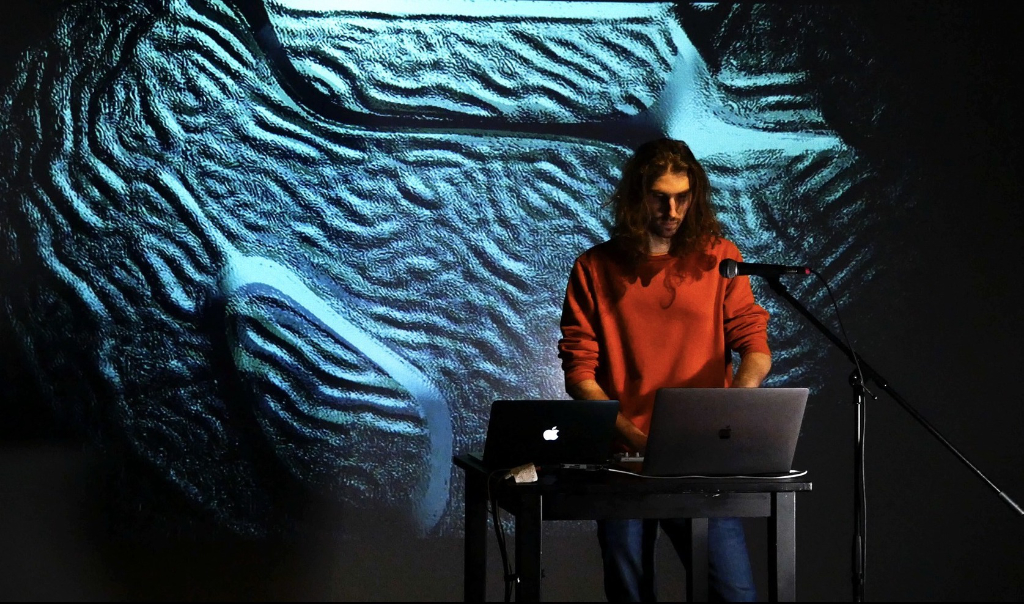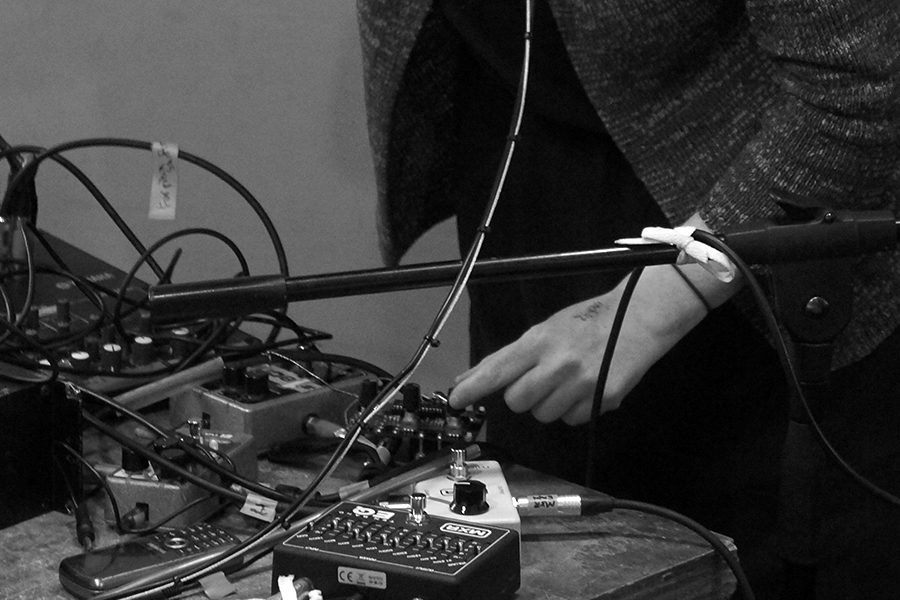Text by CLOT Magazine

New Adventures in Sound Art (NAISA) launched its 23rd annual Deep Wireless Festival of Radio and Transmission Art last January. The festival features an interactive exhibition, hybrid concerts that redefine how we perceive sound and transmission, and online workshops to explore and discover new techniques and perspectives related to radio and transmission art.
Founded in 2002, NAISA Artistic Director Darren Copeland explains that the initial impulse for starting Deep Wireless was to provide an outlet for multichannel audio works that combined text with electroacoustic composition techniques—or what could be called radiophonic pieces.
Later, the festival broadened its scope by incorporating a symposium for radio artists that brought together individuals from different backgrounds. The purpose was to connect and exchange their creative works and experiences. After 2012, the focus gradually shifted from Radio Art to Transmission Art, giving more attention to sound and media artists exploring a variety of transmission media as the subjects for sonic exploration, Copeland continues.
The theme for this year’s edition is Reimagine. Artists have reimagined the electromagnetic sphere and have considered the sounds of transmission as a musical instrument, from converting solar data into images to uncovering the musical potential of the noise between stations. Copeland said the push for renewal following the pandemic and adjustments to meet climate goals suggested new structures and terms for moving forward. So, in their call for works on the theme Reimagine, they asked what opportunities these structures and ways of working presently creatively. How will artists Reimagine the sound art of tomorrow based on the choices that lie ahead?
Copeland explains that in the case of Deep Wireless, works were selected ‘reimagine’ the electromagnetic sphere by exploring the sounds of transmission as a musical instrument, from converting solar data into sound and images to uncovering the musical potential of the noise between radio stations. All are ventures into re-imagining the aspects of life that are often taken for granted.

Dan Tapper’s Helios 2024 installation opened the festival and will be on view until April 1, 2024. Helios 2024 celebrates the sun in its current phase of solar maximum by using solar data gathered from space organisations alongside DIY devices. Seen and unseen structures are converted into images and sound, allowing us to reimagine the sun and engage with its energy in new ways.
Tapper told us via email that for Helios 2024, he used different techniques to draw data from the sun and to represent this data in real-time through audio-visual processes. This ranges from analytical graphs and mappings to real-time solar images such as the Solar Dynamics Observatory (SDO) captured by probes. The work also expands beyond solar data to capture and present the effect that solar activity has on our own ionosphere and electromagnetic environment. A radio spectrum called Very Low Frequency (VLF) is revealed through custom antennas. We can listen to radio in this radio band, naturally produced within the earth’s ionosphere and beyond. This includes lightning strikes from around the globe and the interaction between the solar wind and our ionosphere that results in the northern lights.
When asked about the symbolism behind the name, Tapper says that he was inspired by Helios, the Greek god of the sun and the heliosphere—a bubble created by the sun’s outgoing flow of solar material. This bubble goes far beyond the boundaries of our solar system and acts as a protective shield from interstellar radiation. As the work explores the solar maximum in 2024, it seems fitting to include the date of this current culmination of the solar cycle.
What makes Helios 2024 unique? Helios 2024 is designed to be accessible as an audiovisual work that displays the power and spectacle of the sun. This allows viewers to engage with the sun in an up-close and unique way. Tapper shared that the layered nature of the work allows people to engage with the piece purely as an audiovisual work or to dig deeper and learn about the science of the sun.
Helios 2024 is a transmission artwork that translates different ways of capturing sun data into sound and images. In Darren Copeland’s’ words, A transmission artwork does not have to be exclusive to sound. It can also use images as long as some elements of broadcast technologies are connected to the content or materials of the piece.

During the festival, NAISA also launched its 18th edition of the online compilation of Radio Art, featuring audio works that reimagine the boundaries of sound. Copeland says that radio transmission and reception in its many forms is full of rich and interesting sounds, such as AJ Cornell’s Constriction, which uses a sine wave between 20 and 30 Hz to act as a gate to cut off or amplify other sounds in her mix; the piece produced by media artist Martine Crispo that uncovers the ghosts of the ether and the latent musicality between station signals, and the piece by Rutmeat that is very simple and direct in looking back at perhaps what I suspect might be a violent or painful memory by using raw electric guitar noises and electronic noise pulses.
Deep Wireless Festival of Radio and Transmission Art runs at the NAISA North Media Arts Centre in South River, Ontario, until April 1, 2024.





